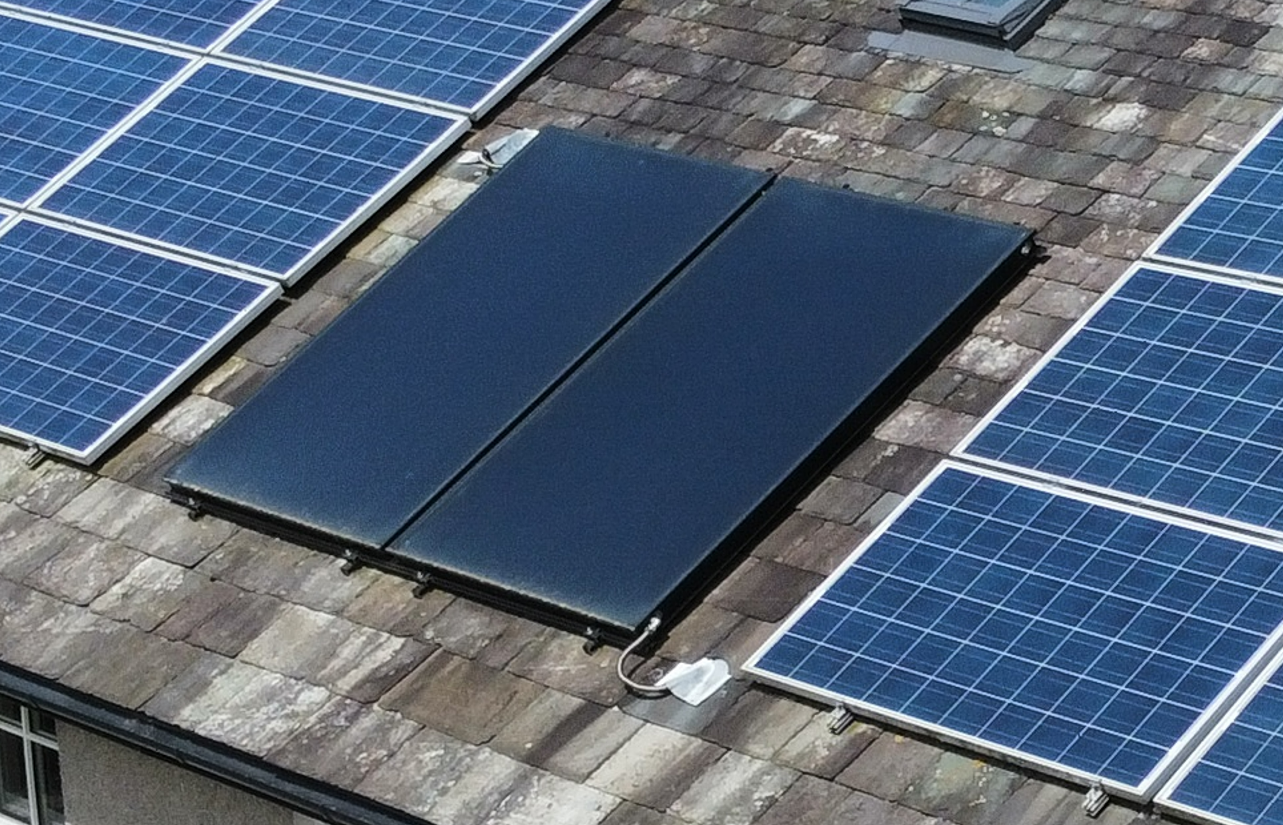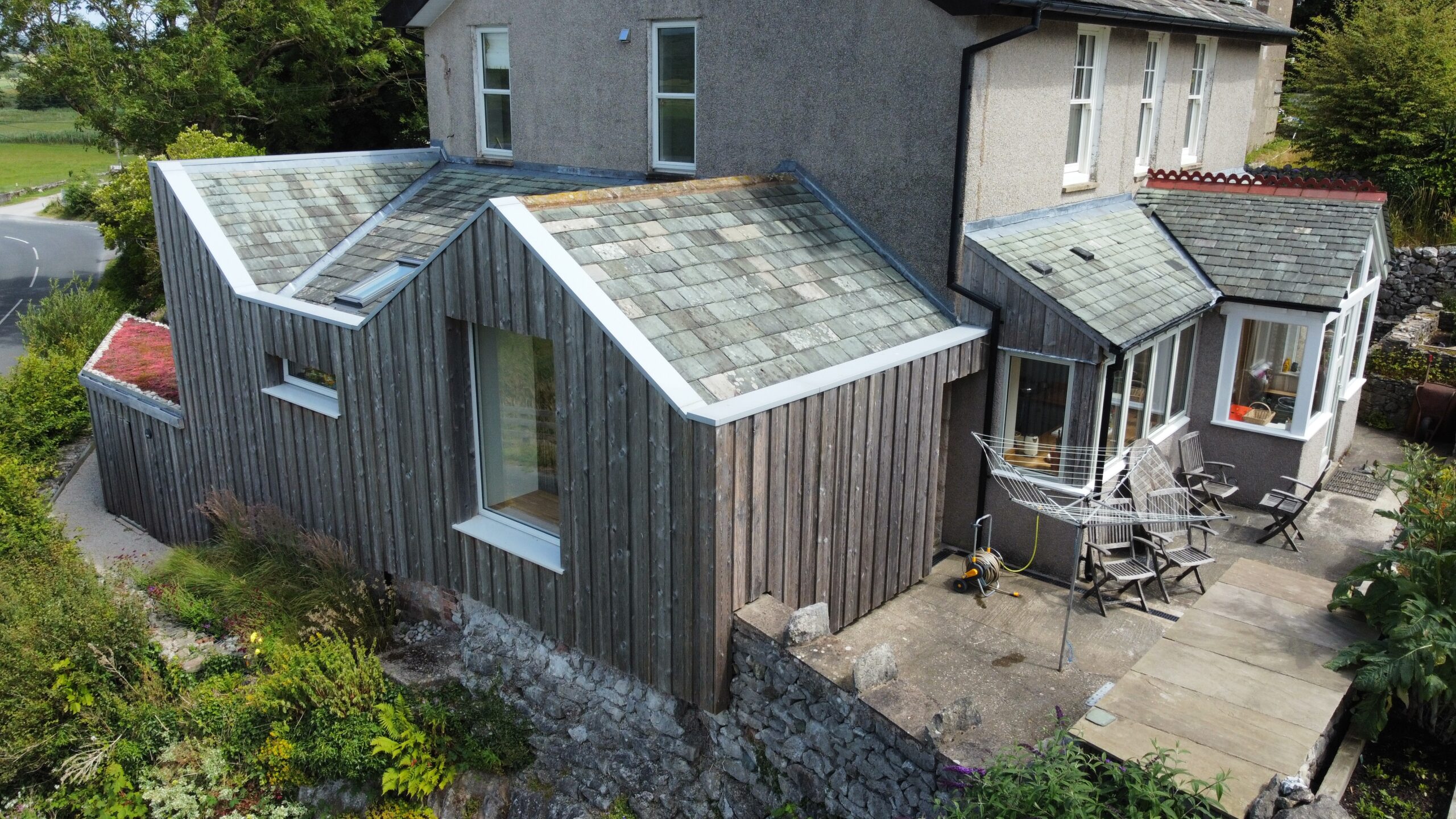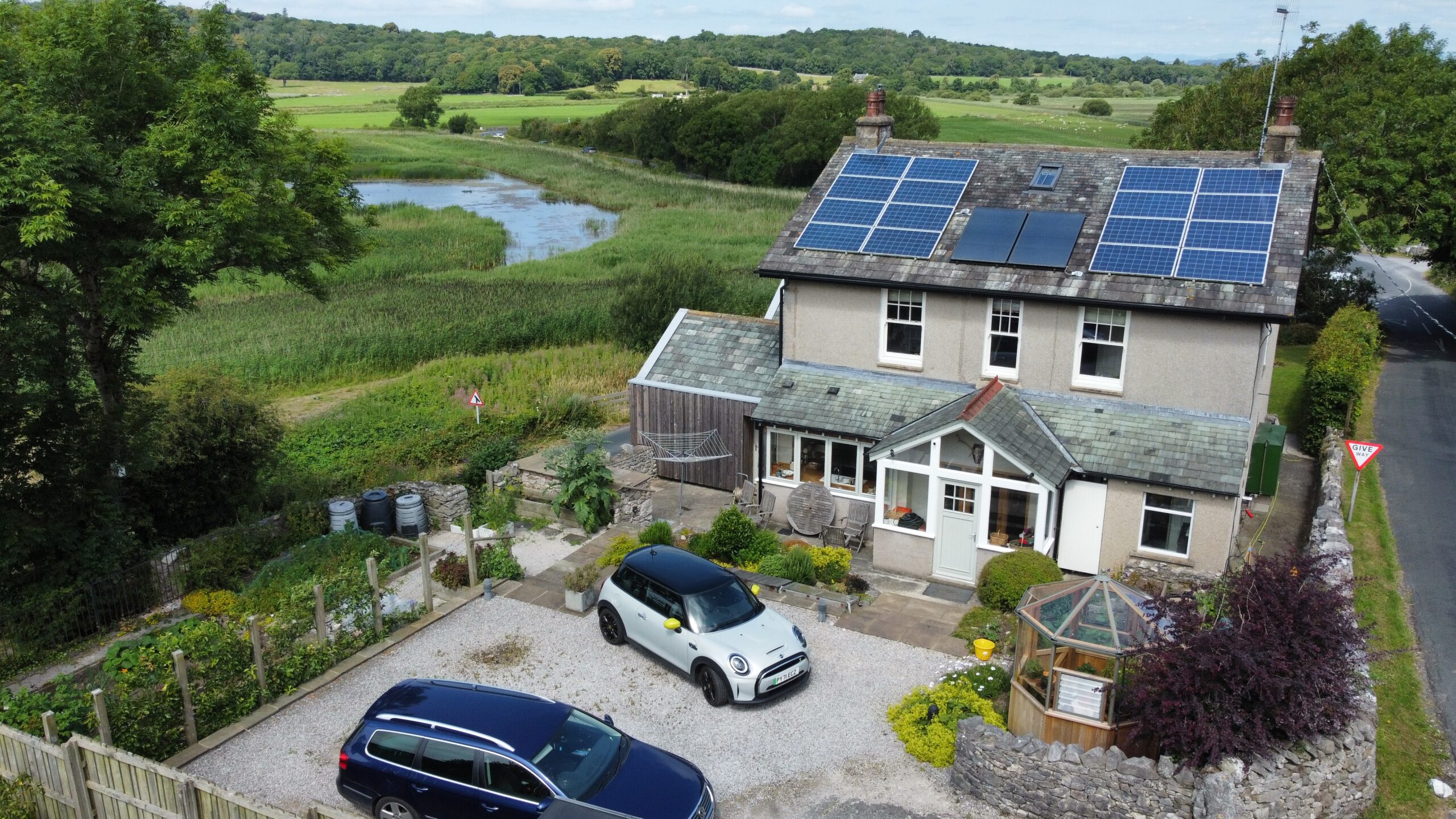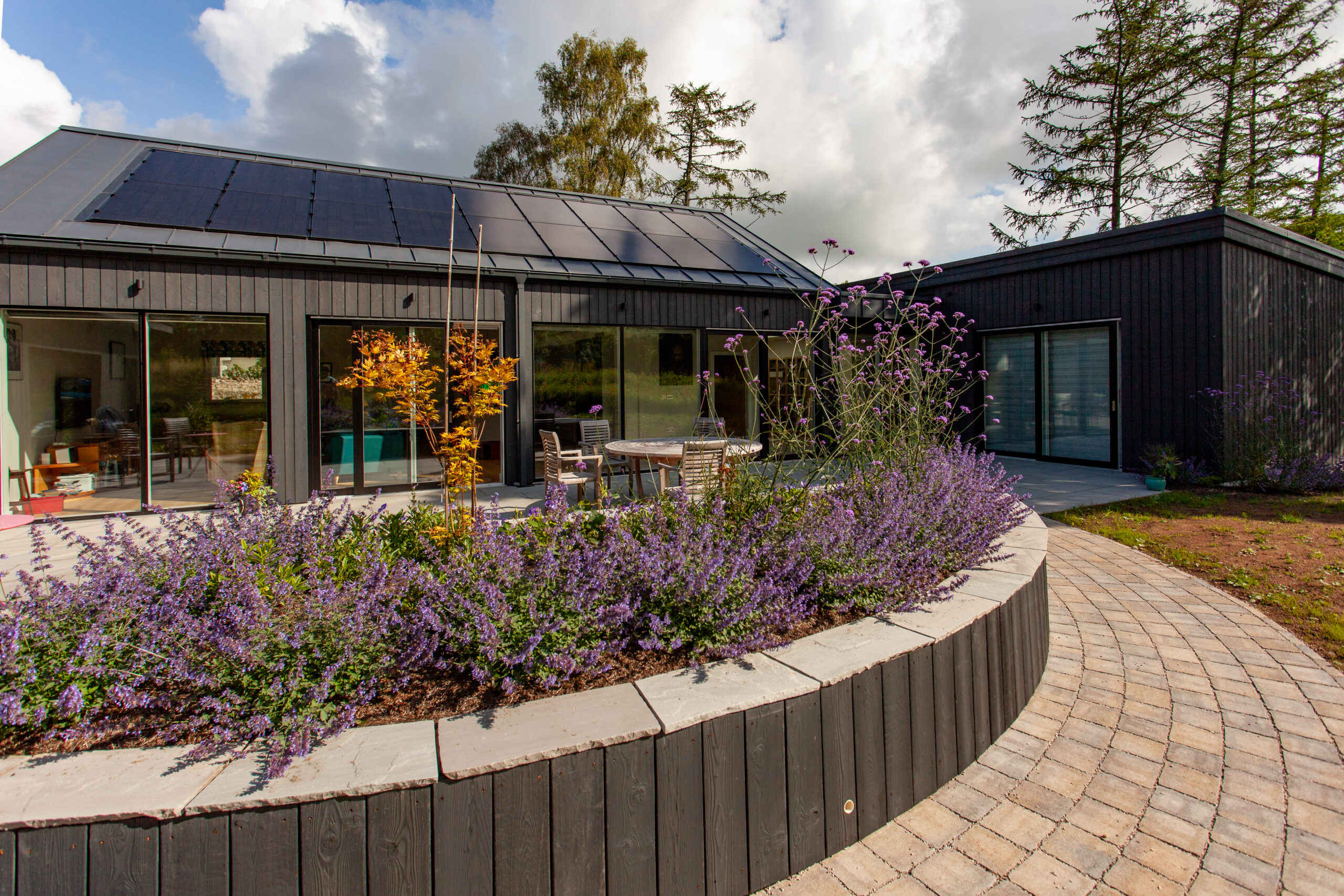Client Brief: To renovate a rural 19th-century house to have the thermal efficiency and running cost of a modern property whilst respecting the existing character of a late Victorian house.
How:
Thermal Improvement
The original property had a thermal efficiency in line with the building construction practices of the time consisting of local limestone walls and simple timber construction roofs with minimal insulation. Wall and roof insulation were upgraded in the historic area of the property to have a thermal performance greater than the current building regulations.
Solar Photo Voltaic (PV) Electricity Generation
Due to the location of the property having a reduced electricity supply, no mains gas and a relatively efficient existing oil boiler it was chosen to invest in PV technology to try and reduce the running costs of the house as the Feed In Tariff scheme represented a good return on investment. This scheme has now been replaced by the Smart Export Guarantee.
As the main roof is south-facing part of the timber frame extension a sedum roof was added to provide additional thermal performance, giving back some wildlife habitat and slowing down the water run off from the roof. it receives a good amount of solar radiation to offset the energy supply cost with electricity generation. The system is a 3.5kW peak system that in the summer is able to provide up to approximately 12 kWh a day.
Home Electricity Storage
To improve the return on investment and the cost of running an electric car from the property an energy-storage system (home battery) was installed at the property. This stores up the energy collected from the solar panels (PV) during the day in a battery instead of feeding it directly back into the national grid for use by the property during the peak period of overnight. This has multiple advantages in efficiency, financial and environmental.
At the moment the property is fitted with a modular 5.6kWh battery which can be further increased in capacity in the future.
Solar Water Heating
Due to the location of the house, easy access to the roof and the wish to reduce carbon emissions Solar Water Heating has been a good addition to this property. This takes solar energy available at the property and uses it to help heat the hot water and thus offset the carbon and the cost of using the oil boiler to heat the hot water.
In summer this provides 100% of the property’s hot water requirements.

Solar Water Heating
Sedum Roof
As part of the timber frame extension, a sedum roof was added to provide additional thermal performance, giving back some wildlife habitat and slowing down the water run off from the roof.

Sedum Roof
Heritage considerations
Given the origins of the property as a late 19th-century dwelling, there were a number of interesting features which the client wished to retain. These included: cornices, paneled doors, and original timber floors.
To help enhance the character of the building, an unsympathetic 20th-century conservatory was replaced with a contemporary lightweight timber extension along with a Victorian-inspired porch.

Heritage Considerations
Result
The main headline figure for this property is increasing the Energy Performance Certificate Rating of the property from an F to a B. This was achieved through better building insulation combined with energy generation and storage at the site.




